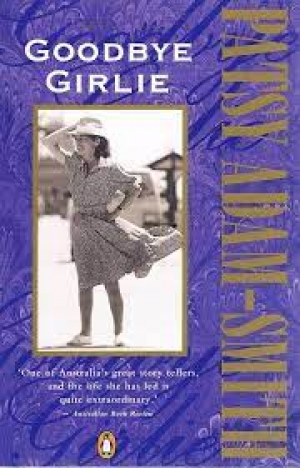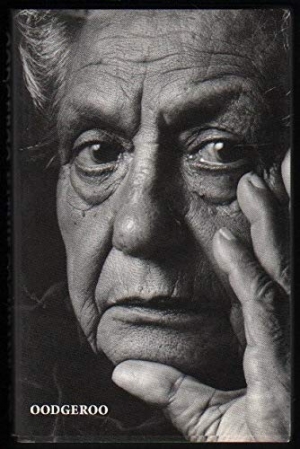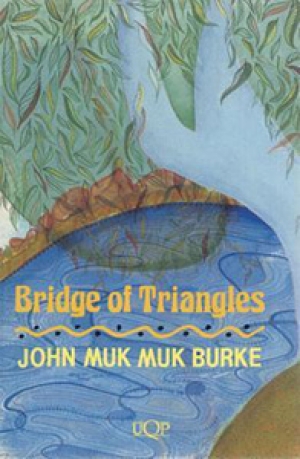Archive
Janet McCalman reviews 'Goodbye Girlie' by Patsy Adam-Smith
It’s a clever and provocative title that Patsy Adam-Smith has chosen for her autobiography. She is a woman who has said many ‘goodbyes’ in her rich and adventurous life; and she is of an age and disposition where ‘girlie’ is heard as an endearment, not a put-down. Patsy AdamSmith is one of Australia’s greatest writers, although you will rarely hear the literati or the academics say so in public. As an historian she has been more widely read than Manning Clark (it would be interesting to know how many of the purchasers of Clark have been able to finish each volume); and she and Wendy Lowenstein have listened to the histories of more Australians than probably the rest of us put together. But she remains insignificant in the eyes of the theorists of oral memory and historical consciousness.
... (read more)Cassandra Pybus reviews 'From a Chair in the Sun: The life of Ethel Turner' by A.T. Yarwood
When most of literary publishing is in the doldrums, literary biographies are seen to be the one bright line in the publisher’s balance sheet. Such is the enthusiasm for biographies that a bevy of scribblers are at this moment casting about for a writer who hasn’t already been ‘done’. I find something unsettling about this voyeuristic fascination where the life of a writer has come to possess an inherent interest, quite apart from the work for which the writer became famous. On this, if not much else, I agree with the caustic Gore Vidal:
... (read more)A striking black-and-white photograph on the front cover of Oodgeroo implacable and wise. And then the publisher’s blurb on the back cover
... (read more)Adam Shoemaker reviews 'Bridge of Triangles' by John Muk Muk Burke
This is a fascinating publication. The first book by Wiradjuri author John Muk Muk Burke, Bridge of Triangles, is really free-form short fiction than a novel proper. Novella length, it is episodic, impressionistic, often poetic and openended. And, while it has many strengths, this 1993 winner of the David Unaipon Award for Aboriginal and Torres Strait Islander authors is ultimately a disquieting piece of work.
... (read more)Michael Heyward reviews 'Patrick White: Letters' edited by David Marr
Letters turn talking to yourself and to someone else into the same thing. The recipient can’t interrupt, and can’t answer back, at least not yet. Self-obsession is almost a virtue in letters since correspondents who won’t talk about themselves are boring. But letters also make for unreliable autobiography because they’re written out of an understanding not just of what the sender wants to say but also what the recipient needs to hear – and every recipient is different. This is why reading letters not addressed to you is taboo: you invade the privacy of two parties.
... (read more)John Hanrahan reviews 'A Place in the City' by Edmund Campion
The ‘place in the city’ of Fr Edmund Campion’s latest pilgrimage into Australian Catholic life and history is St Mary’s cathedral, Sydney. Campion spent six years here as a young-priest working in the shadow of both the cathedral and the august Normal Cardinal Gilroy.
... (read more)Michelle Griffin reviews 'Waving to Hart Crane' by Robert Adamson
Is Robert Adamson Waving to Hart Crane, or drowning? He is certainly calling for help. In 1930, Hart Crane turned his back on Eliot’s The Waste Land and built The Bridge, a poem ‘to launch into praise’, to span across despair towards some brighter shore. But Adamson does not like what he finds on the other side, ‘No sonnet will survive / the fax on fire’, he warns.
The Clean Dark, the 1990 volume that won several national awards, was Adamson at his most meditative, gliding through his riverscapes like a boat at high tide. This time, Adamson is having an argument; with poetry, with other poets, and even with himself. His verse is peppered with questions, with question marks, and exclamation points. He is a shape changer, who breaks down his lines into new forms from poem to poem, and erases his own syntax as he goes along.
... (read more)Rodney Wetherell reviews 'The Golden Age of Australian Radio Drama, 1923–1960: A history through biography' by Richard Lane
In recent times, we hear, stars of TV serials such as Neighbours and Home and Away have been mobbed on arrival at Heathrow Airport, and recognized even in Finland – Australian production houses appear to have a talent for capturing on screen alluring fantasies and traumas for purveying to mass audiences, both home and away. The foundations for this sorely-needed export industry were doubtless laid in the 1940s and 50s, when Australian radio serials and drama were heard around the globe, at least in English-speaking countries (subtitles are difficult on radio). At home, hundreds of hours of drama were pumped out every year on ABC and commercial stations ...
... (read more)Bridget Griffen-Foley reviews '"Red Ted": The Life of E.G. Theodore' by Ross Fitzgerald
On the day of the last Federal election, I became engaged in an unlikely conversation with a helper for the ‘Call-to-Australia’ cause at my local polling booth. When I revealed that I had recently completed a research project on Dr H.V. Evatt, my elderly companion asserted that Evatt should not be hailed as the hero of the labour movement. Australia’s greatest politician, this former member of the Australian Labor Party informed me, was ‘Edward Granville Theodore’.
... (read more)Margaret Smith reviews 'My Bundjalung People' by Ruby Langford Ginibi
Contemporary Aboriginal writing, like Aboriginal art, is now so diverse that is impossible to talk about any one particular style. John Muk Muk Burke, whose first novel, Bridge of Triangles, has just been published, recently told a Sydney seminar for Aboriginal writers that they were no longer writing from the viewpoint of victims. He said they were survivors rising from the ashes of the invasion like the phoenix. Burke’s own novel is multi-layered, poetic and visually strong, with a structure informed by his study of world literature.
... (read more)









